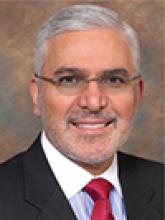Psychiatry has many strengths, some weaknesses, and quite a few threats. Therefore, it is vital that psychiatry aggressively focuses on emerging opportunities and exploits them to reinvent its future.
To do that effectively, psychiatry must undergo a process of “creative destruction”1 to shed its old baggage and tenets, and reinvent itself as a premier medical specialty anchored in evidence-based behavioral neuroscience.
For quite some time, psychiatrists have been patiently waiting for disruptive discoveries catalyzed by ongoing momentous advances and innovative technologies generated by discoveries in molecular genetics and neurobiology. However, psychiatry needs to embrace not only disruptive technologies but also “disruptive thinking” to help reengineer its structure and function and lead to a quantum leap toward a brilliant future anchored in cutting-edge neuroscience.
What facets of psychiatry could undergo creative destruction? What sacred cows should be sacrificed on the altar of necessary, creative change? Imagine the following scenarios:
Create a new name. The term “psychiatry” is based on the archaic concept of “the psyche” from an era of ignorance about the brain generating the mind. Psyche has outlived its usefulness and needs to be shed. A new name incorporating neural structures and functions must reflect the brain mechanisms that generate abnormal thought, mood, or cognition. In addition, the labels currently attached to psychiatric disorders also could also be changed, including stigmatizing diagnoses such as schizophrenia, mania, or borderline personality disorder. New names for such disorders can be linked to brain lesions, pathways, or circuits underlying them. Several years ago Japan replaced the term “schizophrenia” with “integration disorder,” which was met with a positive response from patients and practitioners.2
Destroy false mythology. Misconception and lore of what psychiatry is or is not continues to mislead and distort its scientific principles, goals, and procedures. Creative destruction will give rise to a scientific identity, transcending the absurd fables that shrouded psychiatry since its formative years.
Revolutionize diagnostic models. Current diagnostic schemes are obsolete and must be deconstructed and creatively reinvented based on scientific findings, not just a set of clinical signs and symptoms. The creative destruction process will draw upon scientific breakthroughs and pathophysiological findings psychiatric neuroscientists are discovering (almost daily!). Numerous lab data have been developed for psychiatric disorders, but extensive heterogeneity has prevented diagnostic or commercial use of those tests because of sensitivity/specificity variability.
Design novel treatment approaches. Innovations are desperately needed to create new therapeutics for psychiatric brain disorders. Several dogmas must be slain (such as “chemical imbalance”) and replaced with modern “brain repair” processes, including neuroplasticity and neuroprotection. This would accelerate novel brain interventions such as neuromodulation (eg, repetitive transcranial magnetic simulation, vagus nerve stimulation, and deep brain stimulation) and may set the stage for gene-based therapies, including epigenetic silencing of genes associated with specific disorders. Psychotherapy must be reframed as “verbal neurotherapy” because it certainly leads to salutary neuroplastic changes. As for pharmacologic agents, a new paradigm translating neurobiologic discoveries into effective “neurobiotherapies” must become the pharmaceutical industry’s new focus; a paradigm shift to different delivery systems (intravenous, intranasal, intrathecal, etc.) that can rapidly switch off hallucinations, anxiety attacks, depression, or suicidal urges. Examples of this already exist.3
Transform the delivery system setting. The disastrously dysfunctional public mental health bureaucracy must be abandoned and transformed into “brain institutes,” in all states, similar to cancer centers or cardiovascular institutes, where state-of-the-art clinical care, training, and research are integrated.
New specialization and training model. The psychiatrist of the future ideally will be double boarded in neurology and psychiatry, function more like behavioral neurologists, and provide psychotherapy as needed. A full, accurate assessment of the “mind” cannot be accomplished without a complete assessment of the brain because the mind essentially is the virtual brain. Assessment and management of schizophrenia, depression, or obsessive-compulsive disorder should be no less rigorous neurologically than that of stroke, multiple sclerosis, or Parkinson’s disease.
New image. Psychiatry’s new identity must project a distinctly scientific new image as a superb and highly regarded medical discipline. Creative destruction would involve a difficult transition for “grandfathered” psychiatrists, who will have to abandon old habits and attitudes and retool to adopt new skills. Embracing radical change can be challenging, but we can count on psychiatrists’ abilities and their resilience in adapting to change to when it occurs.
A new destiny. Just as the stunning metamorphosis from embryo to larva, pupa, and imago precedes the emergence of a magnificent butterfly, psychiatry must shatter its cocoon and emerge into a new reality and destiny. Creative destruction is the means for renewal. It is scary to some and exciting to others, but imperative for all.


